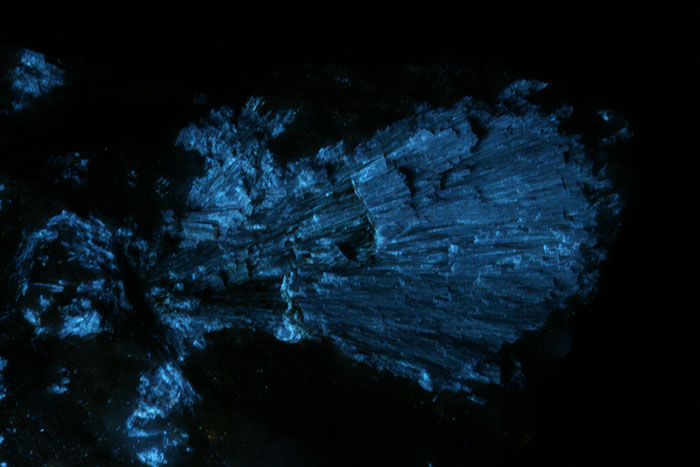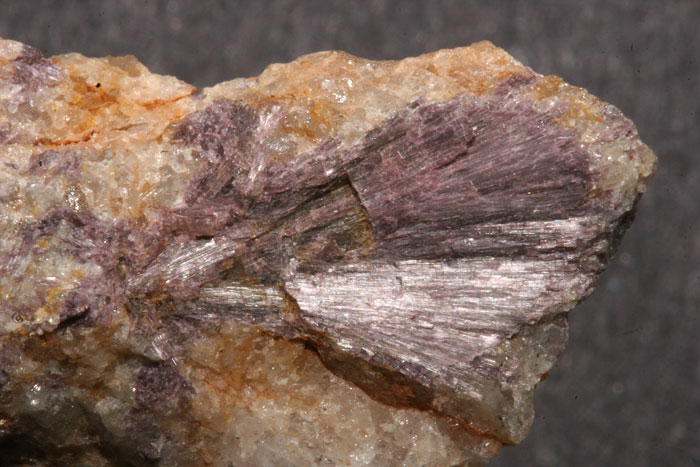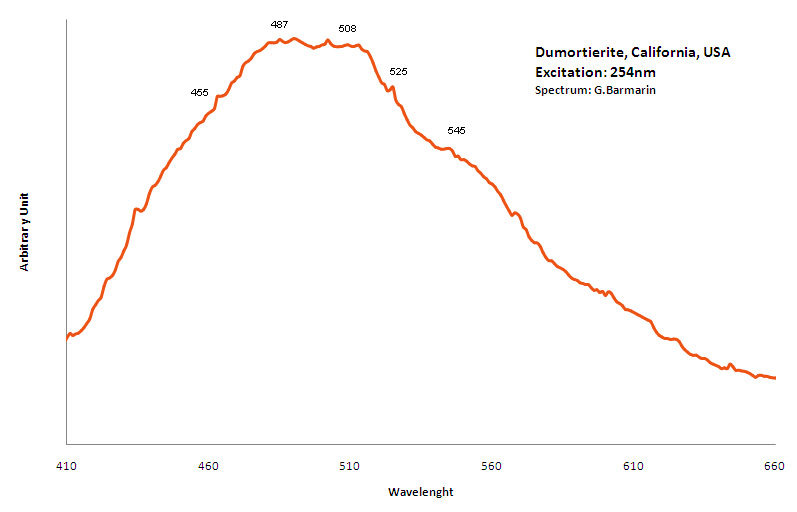Database of luminescent minerals
DUMORTIERITE
Chemical formula: (Al,Fe3+)7(SiO4)3(BO3)O3
Family: Silicates
Status: IMA-GP
Crystal system : Orthorhombic
Display mineral: NON
Luminescence:
Longwave UV (365nm) colors: |
Yellowish White , Red , | ||
Shortwave UV (254nm) colors: |
Bluish White , | ||
Intensity SW:Medium | |||
Daylight picture

Dumortierite, Dehesa, California, USA.
Photo and Copyright: Gérard Barmarin.
Shortwave (254nm) picture

Dumortierite, UVSW, Dehesa, California, USA.
Photo and Copyright: Gérard Barmarin.
Pictures Galery:



 ...
...Do you have a photo of this mineral you would like to see in the gallery? Contact us!
Phosphorescence (in the common sense of the term) observable with the naked eye:
No phosphorescence visible to the naked eye under any type of UV
Activator(s) and spectrum:
Activator(s): TiO6, Cr3+,
Peaks in the spectrum (nm):
TiO6 replacing AlVI3+ : Large band peaking at 460 nm
Cr3+ replacing AlVI3+ "R-Lines": 680, 688 nm (Gorobets)
455, 487, 508, 525 and 545nm

Col. G. Barmarin; Spectre: G. Barmarin
Best localities for fluorescence (*):
- Magadanskaya Oblast, Far-Eastern Region (Siberia), Russia;
- Dehesa Dumortierite deposit, Alpine, Laguna Mts, San Diego Co., California, USA;
- Vaca Morta quarry, Serra da Vereda, Boquira, Bahia, Brazil;
(*)The data are not exhaustive and are limited to a few remarkable localities for fluorescence
Bibliographic reference for luminescence:
- The Henkel Glossary of Fluorescent Minerals, Dr. Gerhard Henkel, Published by the FMS, 1989 ,
- Fluorescence: Gems and Minerals Under Ultraviolet Light, Manuel Robbins, 1994, Geoscience Press, ISBN 0-945005-13-X ,
- Handbook of Fluorescent Gems and Minerals, a practical guide for the gem and mineral collector, Jack de Ment, 1949 ,
Reference for luminescence on the Internet:
Images:
- Dehesa, California, USA: http://www.mindat.org/photo-151490.html
- Dehesa, California, USA: http://www.mindat.org/photo-151843.html
- Dehesa, California, USA: http://www.mindat.org/photo-488117.html
- Vaca Morta quarry, Bahia, Brazil: https://www.mindat.org/photo-961433.html
Mineralogical reference on the Internet:
 http://www.mindat.org/show.php?name=Dumortierite
http://www.mindat.org/show.php?name=Dumortierite
 http://webmineral.com/data/Dumortierite.shtml
http://webmineral.com/data/Dumortierite.shtml
Internet Search:
 Image search on 'Google Images'
Image search on 'Google Images'
 Search for documents in all languages on Google
Search for documents in all languages on Google
A request providing no result means only that no such reference exists in the database, but it does not mean that what you are looking for does not exist, just not to our knowledge. If you think you have found an error or omission, please let us know via the contact page being sure to cite the source of information.

